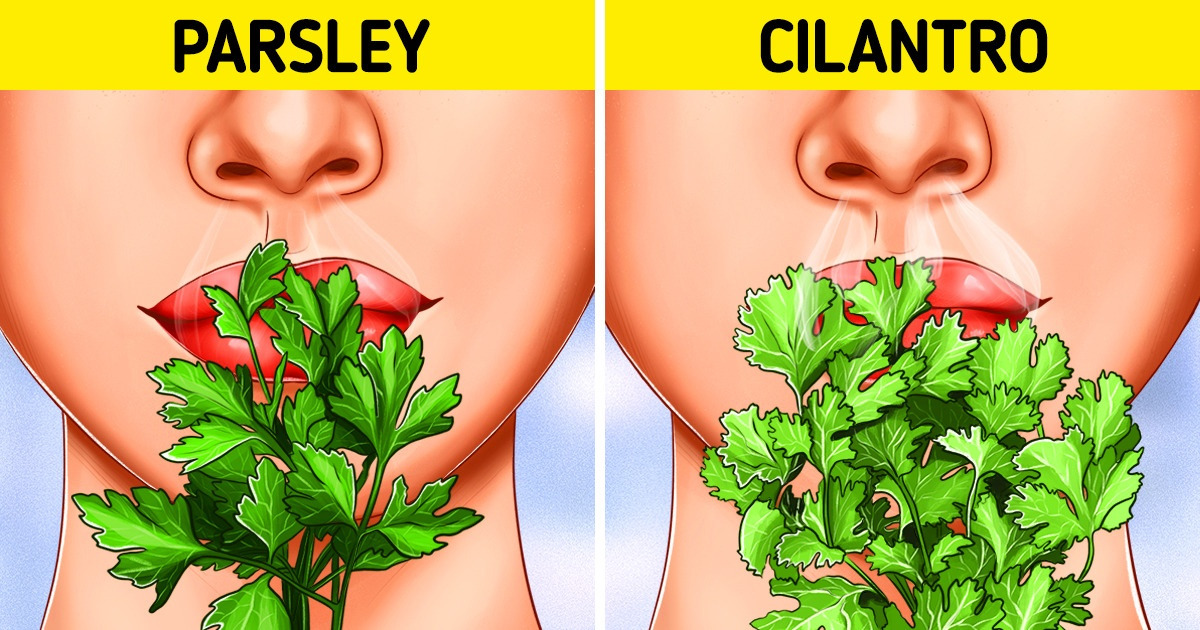
What 8 Foods We Often Confuse for Each Other Are
Sometimes it’s hard to tell some products apart because of their similar looks or names. However, despite some similarities, they usually taste different and can be used for different purposes. 5-Minute Crafts will tell you about the most popular products that we usually tend to confuse.
1. Cinnamon and cassia
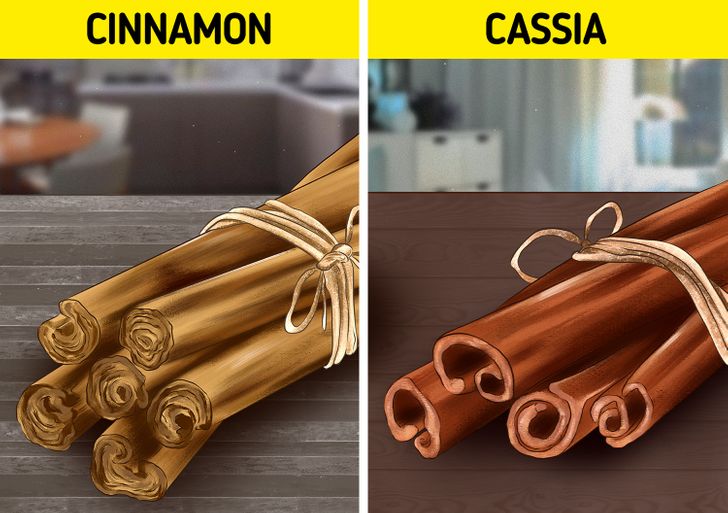
Most of the commercial ground cinnamon you can find in stores is actually cassia (sometimes it can also be a mix of cassia and cinnamon). Though they are related, they are 2 different spices. When they are ground, it can be hard to see the difference between them.
- Real cinnamon contains many tight sticks with soft layers that curl in a telescopic form, creating a perfect circle. Its color is warmer and more tan. Real cinnamon has a sweet flavor.
- Cassia sticks curl in the form of a scroll with thicker sticks. Its color is more reddish-brown. Its texture is more coarse with a strong and more bitter flavor.
2. Jelly and jam
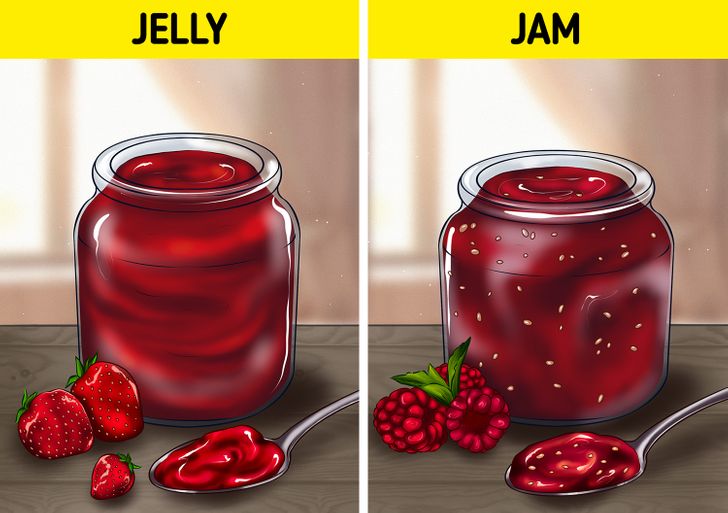
The main difference between jelly and jam is the number of original fruits used to make them.
- Jelly is made by crushing fruits and getting rid of the chunky leftovers to get the fruit juice. After this, it gets mixed with pectin (natural starch from fruits and vegetables) and heated until it turns into a gelatinous spread. Because of this, jelly has a smooth consistency.
- Jam is also made of crushed fruits, but their chunks don’t get removed to give it a more spreadable consistency.
3. Cold brew and iced coffee
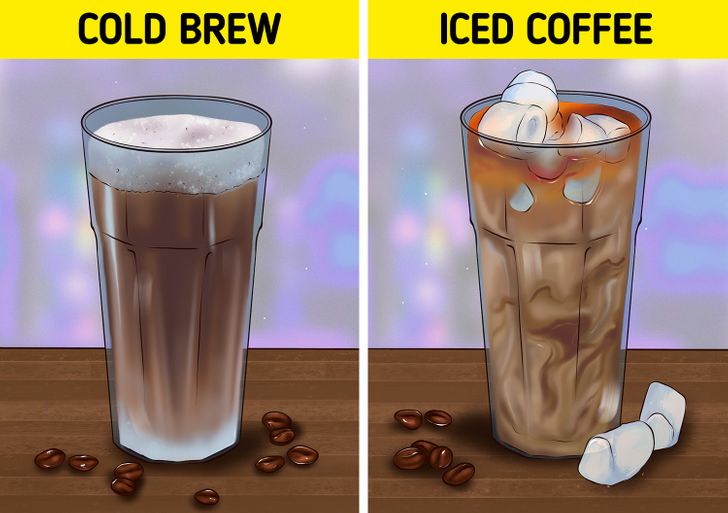
The difference between these 2 popular drinks is in the way they are made.
- Cold brew is made by steeping coarse-ground coffee in cold water for at least 12 hours (or even longer for stronger flavor). After this, the grounds get filtered out to get the coffee concentrate that can be mixed with milk, water, or ice.
- Iced coffee is simply a regularly brewed coffee that is cooled down and served over ice.
4. Parsley and cilantro
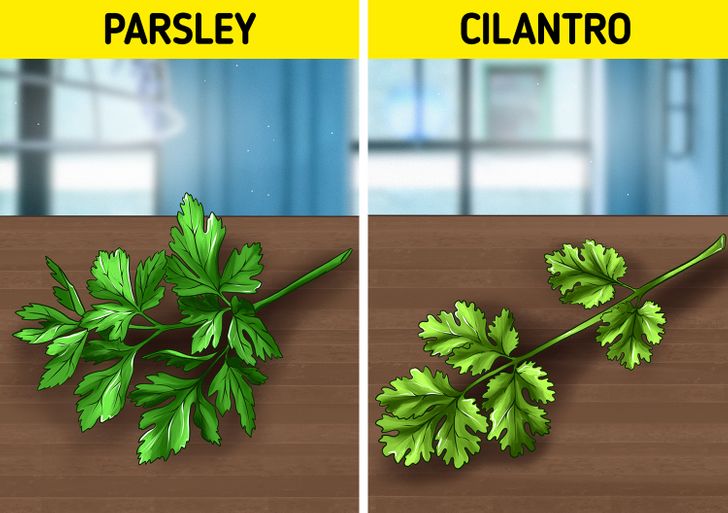
Though they might look very similar because they come from the same botanical family, they are actually 2 completely different herbs.
5. Ice cream and gelato
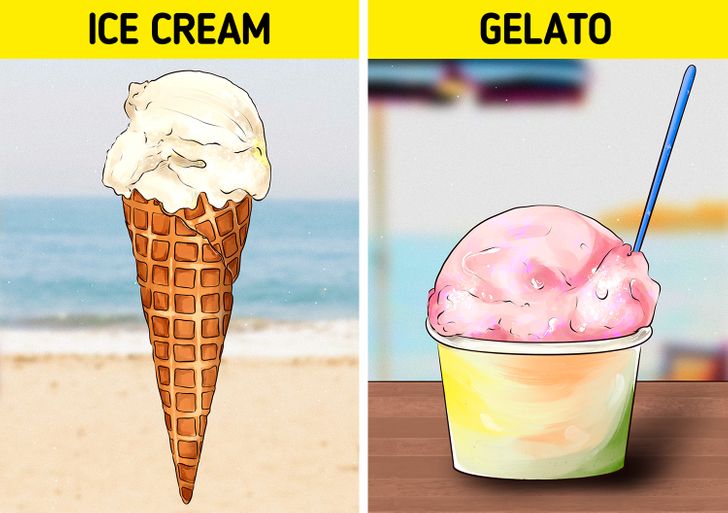
The difference between these 2 refreshing desserts is in the ingredients used to make them.
- Ice cream is usually made with cream, milk, and egg yolks. Also, it’s served at a temperature of 0ºF.
- Gelato has less cream, more milk, and no egg yolks. This dessert is usually served at a temperature of about 15ºF.
6. Sushi and sashimi
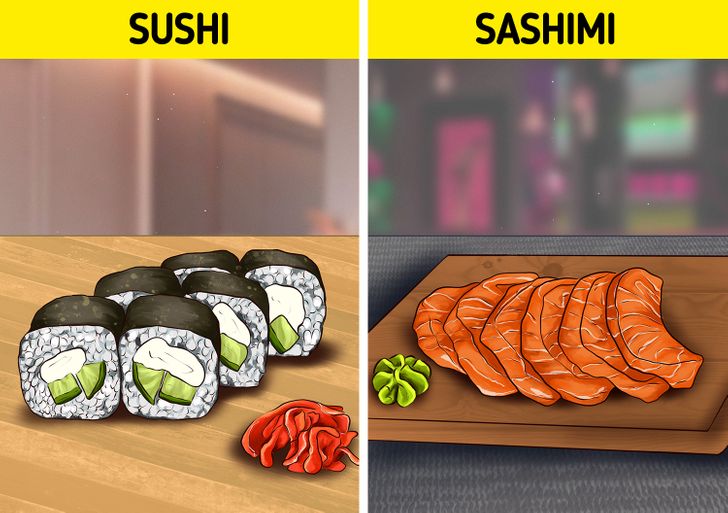
To tell sushi apart from sashimi, look at the vinegared rice, as it’s a vital ingredient.
- Sushi’s main difference is the fact that it can consist of any ingredient paired with vinegared rice. It can be wrapped in seaweed, rolled up, and sliced into bite-size pieces.
- Sashimi is sliced fish (or sometimes even meat) that is served and eaten without any other ingredient, but sometimes soy sauce is provided to add taste.
7. Belgian endive and curly endive
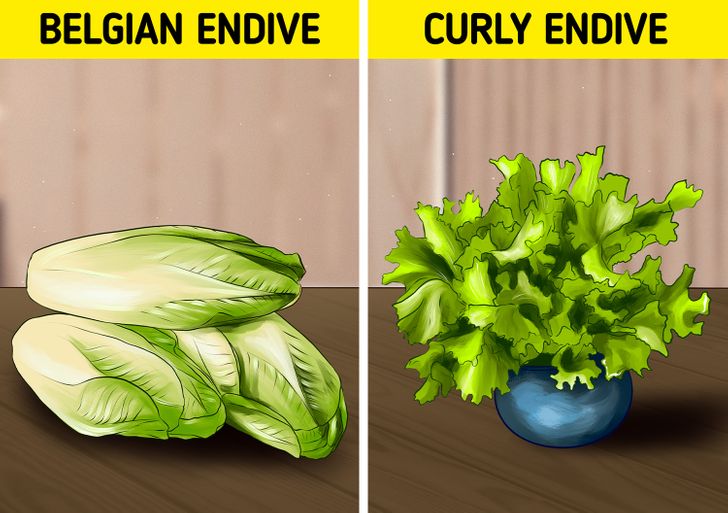
They are both classified as endives, but they have differences in looks, texture, and taste.
- Belgian endive can be both white and red, this chicory is the crunchiest, and it has a gently bitter taste with nutty sweetness.
- Curly endive (or frisée) is a salad green loved by many. It has a frizzy texture and a bittersweet, mildly peppery taste.
8. Baking soda and baking powder
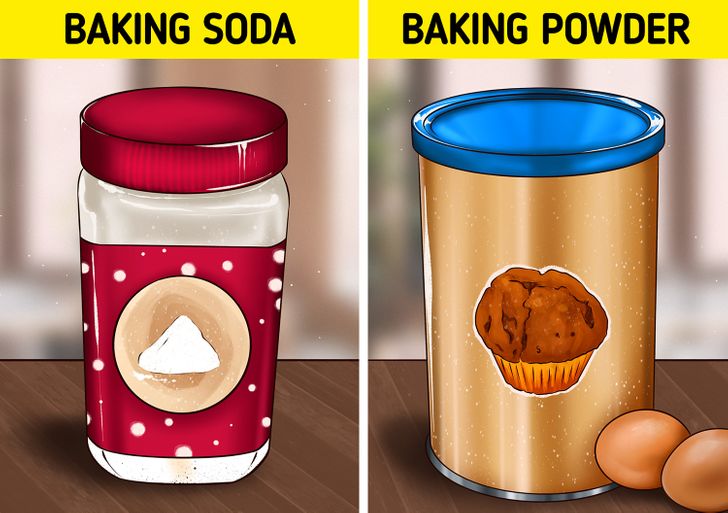
Very common in baking as leavening agents, baking powder and baking soda have some differences.
- Baking soda is sodium bicarbonate, a chemical compound that needs to be activated by acid and liquid to help baked goods to rise.
- Baking powder also includes sodium bicarbonate, but it also contains acid. All you need to do is add some liquid to activate it.